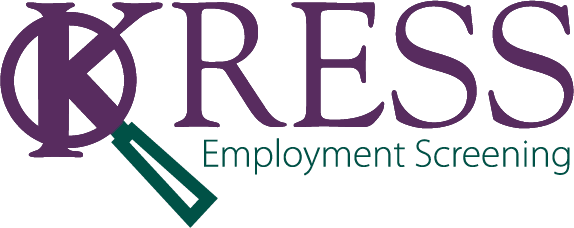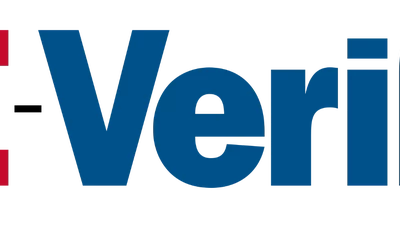The benefits of drug testing are clear. It improves workplace safety, cuts costs, and helps people do their jobs. For many employers, testing is also required by law.
If drug and alcohol use goes unchecked, the risk of workplace accidents and legal trouble rises. Workplace drug testing helps protect workers and reduce risk.
“Employers who take proactive steps to ensure a safe, drug-free workplace not only protect their workforce but also strengthen their company’s long-term success.” – Constance Brackett, Chief of Staff at KRESS
When drug use drops, the problems tied to it (slower reaction time, poor depth perception, weak motor skills) drop too. That means safer workplaces and healthier employees. Unfortunately, drug use is increasing. In fact, the U.S. workforce urine drug positivity rate was 4.4% in 2024, showing how common drug use remains even as testing reduces risks.
Why Testing Matters
A workplace drug testing program brings gains:
Benefit | Impact |
|---|---|
Safety | Fewer workplace accidents |
Liability | Less legal risk |
Productivity | Fewer absences, better work |
Healthcare Costs | Lower insurance and claims |
Compliance | Meets federal laws |
Prevention | Deters drug use, spots problems early |
Safety and Accidents
Workers impaired by drug use or alcohol are more likely to cause accidents. This is true in safety-sensitive industries like trucking, construction, and healthcare. Impairment affects depth perception, reaction time, and motor skills. It should come as no surprise that these safety risks can cause serious or fatal injuries.
Employers are increasingly concerned about workplace safety due to rising drug use. The National Safety Council notes that employees who misuse substances are 3.6 times more likely to be in workplace accidents and 5 times more likely to file workers’ compensation claims.
Marijuana use is also a growing factor. From 2012 to 2022, post-accident positive marijuana tests rose 204%, reaching 7.3% in 2022—the highest in 25 years.
Liability and Legal Protection
Did you know employers can be held responsible for workplace accidents caused by impaired workers?
One serious drug-related accident can cause lasting damage to a business. From lawsuits to reputation loss, even a single event can threaten a company’s survival. Having a clear drug testing policy reduces that risk.
Testing can happen for different reasons: pre-employment, random testing, reasonable suspicion testing, or after an accident. Each type helps employers follow federal laws and reduces risk of testing positive incidents. Industries like transportation require pre-employment drug testing, random drug testing, and post-accident testing.
State laws also apply. Pre-employment drug testing must follow privacy rules. Employers should consult legal counsel and update policies often, especially with marijuana laws changing. A medical review officer often confirms test results to ensure fairness.
Productivity and Morale
Substance abuse leads to more absences, poor performance, and higher turnover, with drug testing programs helping to spot problems early and cut costs.
Employees with substance use disorders are 2.5 times more likely to miss work. Incredibly, absenteeism and lost productivity cost employers at least $10.9 billion annually from drug use and $5.5 billion from substance use disorders.
Fair testing policies can improve employee morale and employee safety. But some workers see testing as an invasion of privacy. Others may avoid jobs at companies with strict rules, which can affect recruitment of job applicants.
Productivity Comparison
Metric | Drug-Free Workplace | Non-Drug-Free Workplace |
|---|---|---|
Absenteeism | Lower | Higher, with increased absenteeism |
Turnover | Lower | Higher |
Productivity | Higher, steady | Lower |
Costs and Insurance
Workers who use drugs or alcohol are more likely to have absences, higher turnover, and workers’ comp claims. Employers spend about $85 billion each year on related injuries and illnesses. Workers with substance use disorders also have healthcare costs about $2,197 higher per year, often from more ER visits.
A strong program reduces these costs by cutting workplace accidents and health problems tied to drug abuse and substance use disorders. Over time, it lowers insurance rates and supports well being for employees and other employees.
Compliance and Reputation
In many industries like oil and gas, pre-employment drug testing and random drug testing are required by law. DOT-regulated jobs must follow strict rules. Failure to comply can lead to fines and bad publicity.
Beyond laws, testing supports public safety and shows that an employer values employee safety. This builds trust and makes hiring easier. Research shows that companies with clear drug testing policies have fewer incidents and a safer workplace.
Prevention
Employers often make job offers contingent on passing a pre-employment drug test. This means new hires start clean and lowers the chance of bringing safety or legal issues into the workplace.
Random drug testing keeps workers accountable. Early action through reasonable suspicion testing, for-cause testing, or post-accident testing allows employers to step in before issues grow. Some workers may be directed to drug treatment or employee programs, which helps recovery and reduces workplace drug abuse.
“Every employer has a responsibility to make sure their teams go home safe at the end of the day. A clear drug testing program is one of the simplest, most effective ways to make that happen.” – Constance Brackett
Testing Methods
A drug screening is initiated before a job offer is proposed and is usually conducted at an offsite healthcare facility. A urine test is the standard type of drug screening used and is the test of choice mandated by the U.S. Department of Transportation (DOT).
However, there are other types of pre-employment drug screenings such as the saliva, blood, and hair test.
A urine test, or urinalysis, is the most common test for employment purposes. There are two types of urinalysis: the drug screen and the drug test or confirmation. The drug screen comes first and is usually followed by a test or confirmation if necessary.
Please note, labs are not always looking for actual drugs in these samples; mostly they are looking for drug metabolites. Once the body takes in a substance, the end product looks much different, once it passes through. For example, illicit drugs are ingested, injected, or inhaled and are released as a metabolite. Drug tests are not actually looking for drugs in a person’s system, but for the metabolites.
- Urine tests: Most common form of workplace drug testing, used for pre-employment and random testing.
- Hair tests: Show long-term use of illicit drugs.
- Saliva and oral fluid tests: Detect recent drug use.
- Blood tests: Less common but useful after accidents.
- Alcohol tests: Can be used after accidents or when impairment is suspected.
Challenges
Drug testing has many benefits, but also some negative consequences. Some workers see it as an invasion of privacy. Others may avoid jobs with strict rules. Questions about fairness and use of results are common.
Employers can ease concerns with clear rules and respect for privacy. Explaining the purpose of testing and offering support programs shows care while tackling workplace drug abuse. Effective tools like employee assistance programs reduce risks and help build a safer workplace.
Drug Testing in Sports
Drug testing in sports protects athlete health, deters substance use, and lets fair competition thrive. Regular testing encourages athletes to stay drug-free, and also makes sure all players follow the same standards and test negative to compete.
Sports raise similar ethical debates. Privacy and autonomy questions remain. But public safety, fairness, and the fight against illicit drug use show why testing matters in both sports and workplaces National Institute on Drug Abuse. The National Institute also supports research on how drug testing helps both athletes and workers.
Final Thoughts
Employees are a company’s most valuable resource. Drug testing protects their health and safety, which in turn protects the business. A solid program also provides compliance, reduces safety risks, and builds trust. It shows a company’s commitment to protecting workers and creating a safe work environment.
KRESS can help you set up workplace drug testing programs that protect your people and your business. Test today and see how it reduces risk for many workers.
FAQs
What are the benefits of workplace drug testing?
It improves workplace safety, reduces liability, boosts productivity, lowers healthcare costs, and confirms compliance with federal laws.
Is pre-employment drug testing required by law?
In industries like transportation, regulated by the DOT, pre-employment drug testing is required. Employers must also follow state laws, including marijuana rules.
How does drug testing reduce workplace accidents?
Drug testing helps deter drug use and means employees are alert and capable, lowering accident risk in safety-sensitive industries.
What types of drug testing methods are available?
Employers may use urine, hair, saliva/oral fluid, alcohol tests, and blood tests. Each has strengths in detection and accuracy.









